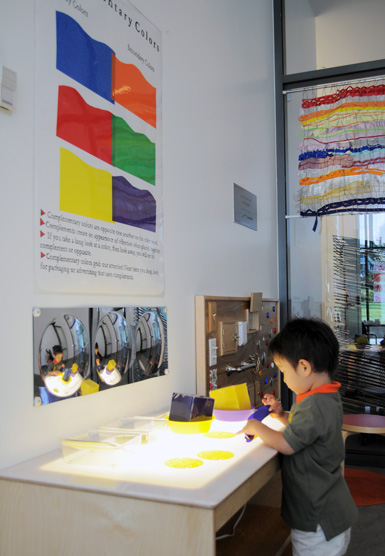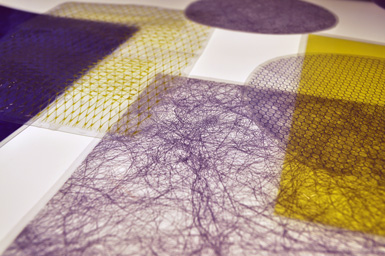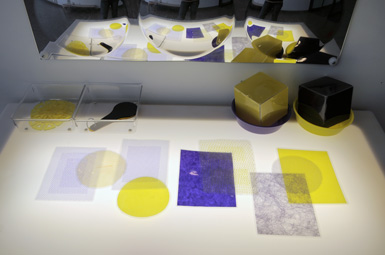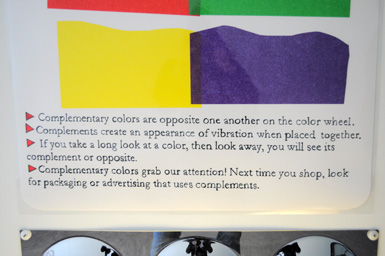Exploring Complementary Colors and Textures on the Light Table
I really like designing light table explorations because they offer open-ended, visual, and kinesthetic ways to play and learn. We make a lot of our own light table manipulatives because we like to show teachers and families that they don’t have to purchase materials to use with light tables or panels.
We’ve also found that though we like the transparent light table manipulatives available for sale, some of the objects are small and may pose a choking hazard to the guests who visit our space.
When trying to think of new materials to put on our light table, I often try to select things that will connect with our Every Day Art Project, as we did with the flower shapes exploration early in the summer. Otherwise, I try to select a grouping of objects that are related through some kind of theme or concept. Sometimes the themes are abstract or narrative, other times they are more concrete or based on the elements and principles of design. Sometimes I check out Play at Home Mom’s Playing with Light pin board for inspiration.
At the end of the summer, I charged our intern, Hannah, with the challenge of designing a new light table exploration.
To gather ideas, she looked through our found materials collection. She was most drawn to materials with varying textures- particularly a mesh onion bag, a yard of tulle, and a soft fibrous paper used to wrap a bouquet of flowers.

I shared with Hannah something I’ve observed in the studio for many years: For the most part, children first notice similarities and differences in color, then shape, and then visual texture. We once ordered a manipulative from an early childhood supplier that was designed to have children match samples of textures like hook tape, woven grass, sandpaper, and a few others. When I observed children matching the parts, they didn’t do it by feeling the textures; they did it visually by matching the colors of the materials because each material was in a different color. From then on, I realized that if I wanted to draw attention to the differences or similarities of the textures of materials, I would need to remove the element of color and shape, or at least keep the colors and shapes uniform.
So, when we looked again at the things Hannah collected, we noticed that among the them were many things purple and yellow. This pairing of colors is a set of complementary colors.
In order to keep the variables to a minimum, Hannah cut rectangular and circle shaped samples, all the same size, from the purple and yellow materials. Then she sent them through the laminator.

Materials on the light table inevitably migrate over to the work tables, so if they are flat we have to laminate them to distinguish them from other collage materials available. Laminating them, though, doesn’t always guarantee they won’t get cut and glued into someone’s project.
Margaret, our other summer intern, collected a few of the other purple and yellow things we already had in our cabinet of manipulatives and added them to the shapes Hannah created.

Finally, to offer a bit of information for anyone that could or cared to read it, we hung a poster about complementary colors that we made a few years ago just above the convex mirrors above light table.

The purple and yellow materials have now been out for a few months. We’ve observed children stacking them, feeling the differences in texture, matching the shapes, and matching the colors. My two-and-a-half-year-old daughter came for visit and we enjoyed stacked the round shapes to make a purple and yellow “sandwich.”
It’s now time to refresh the light table activity again, so its time to move on to another set of set of complementary colors! When we get it set up, we’ll post some photos.
What kinds of explorations or themes have your children or students enjoyed at the light table?

